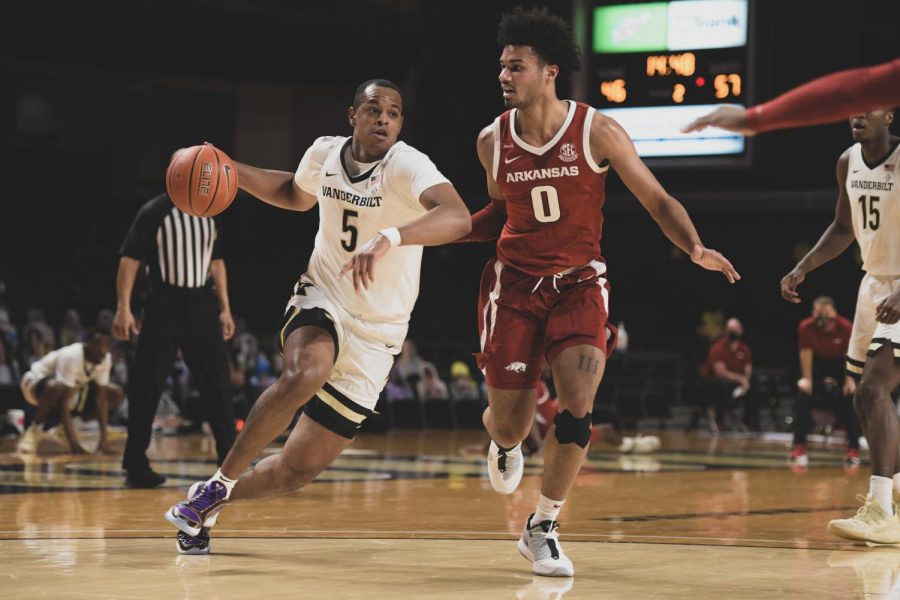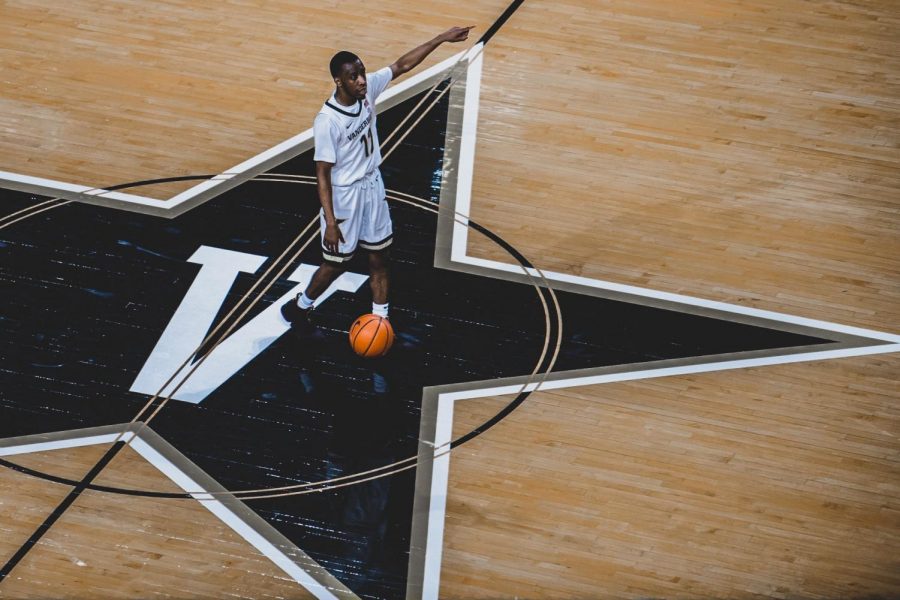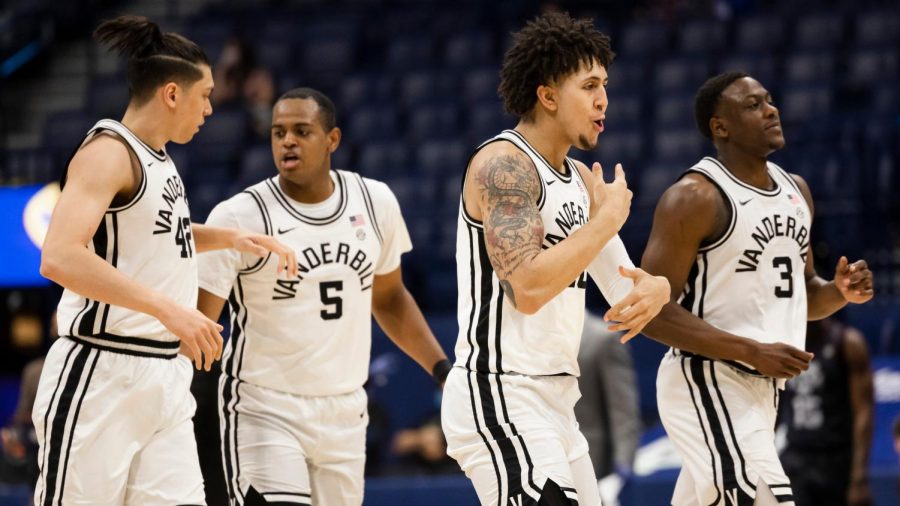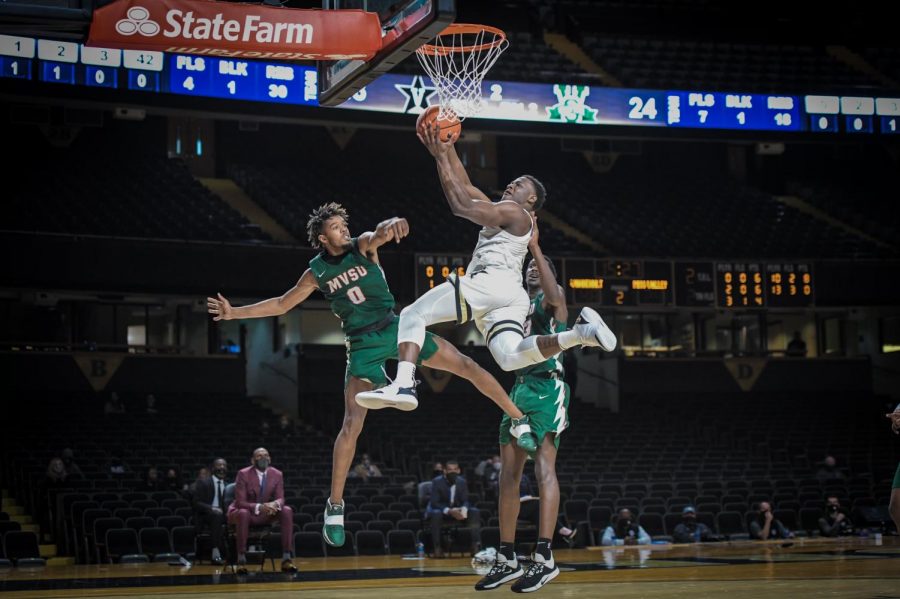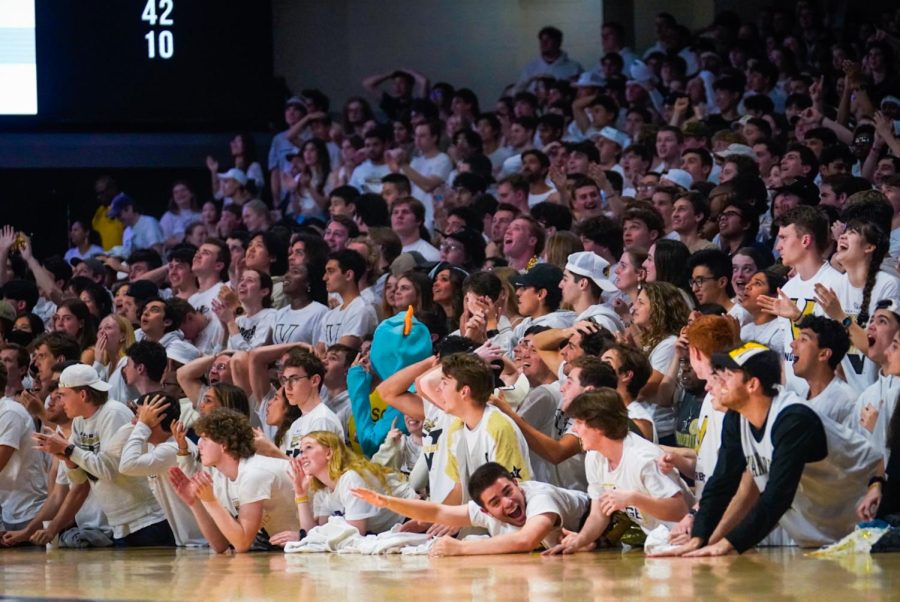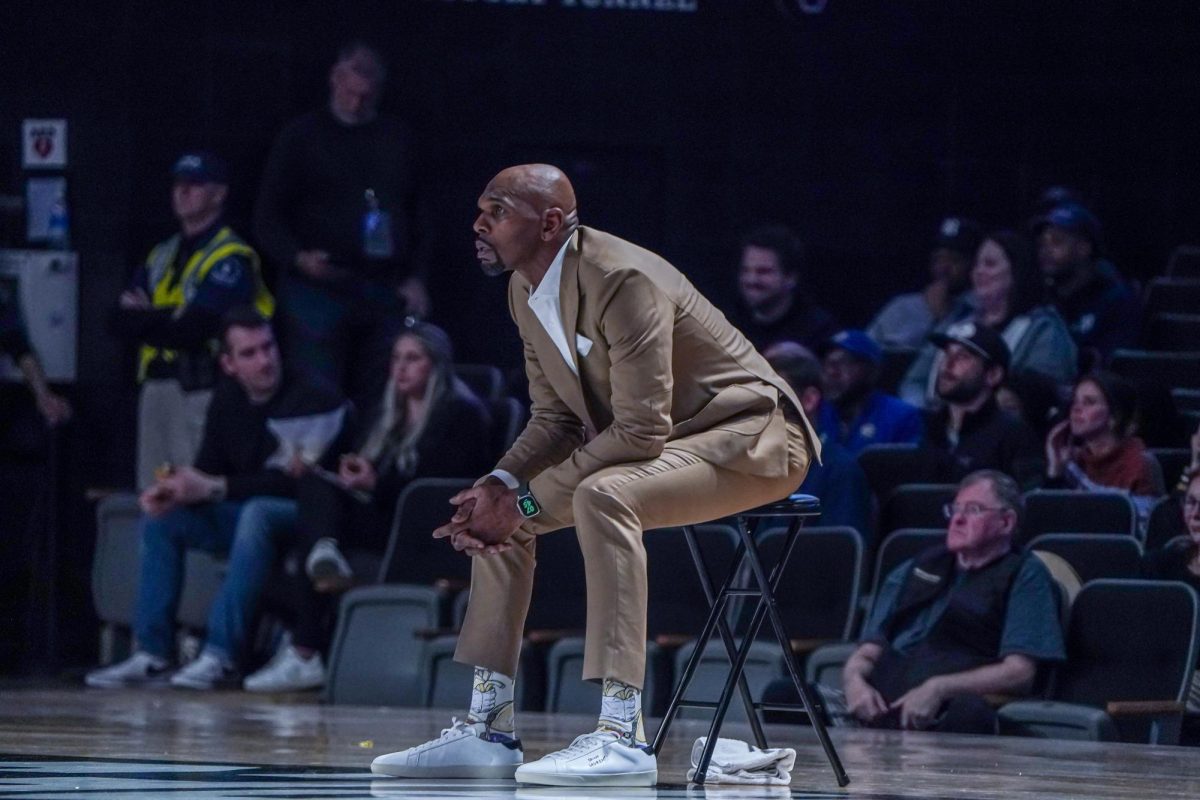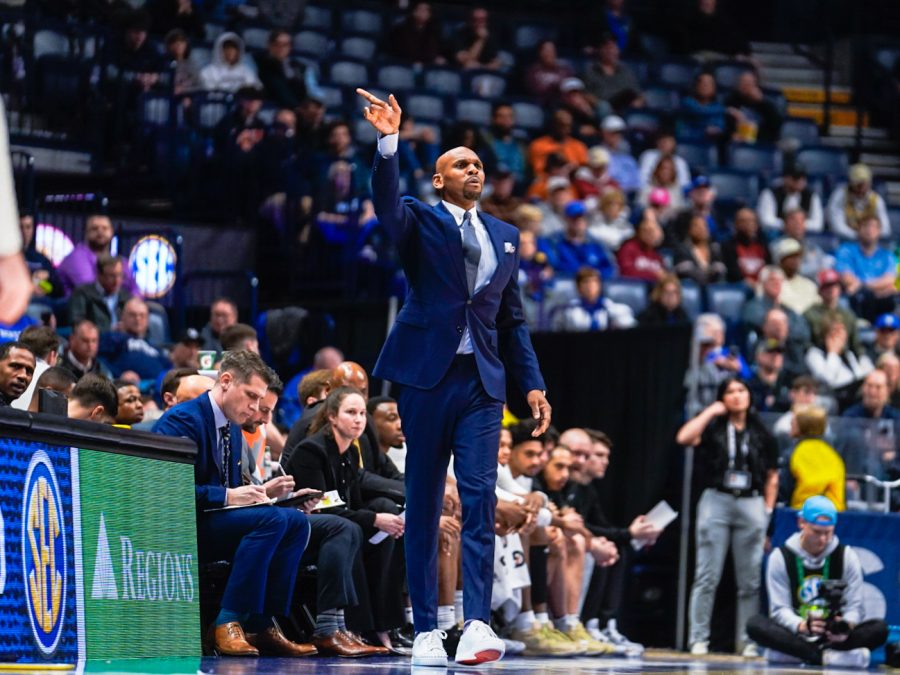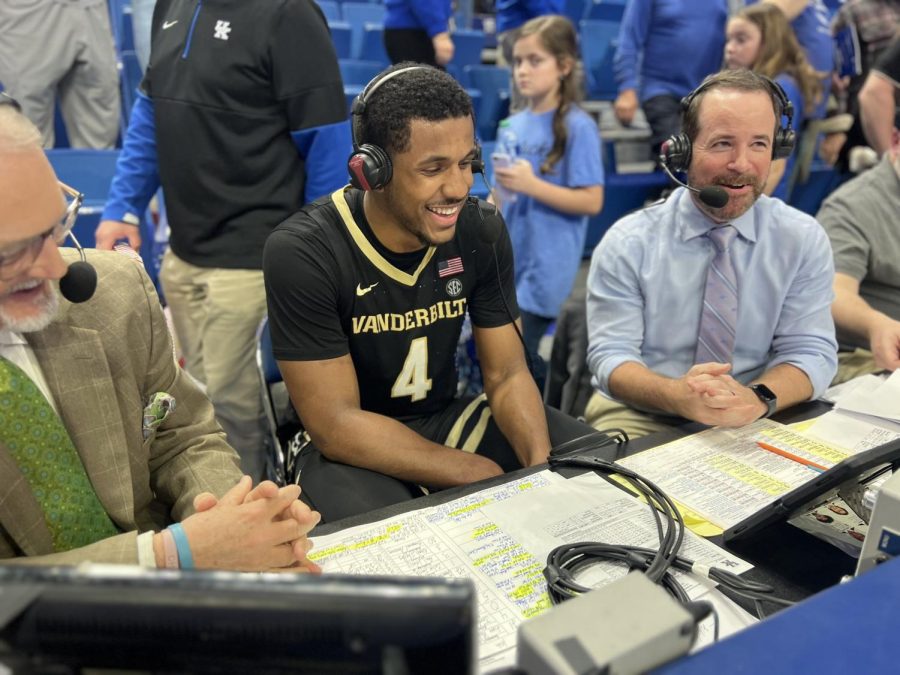From COVID-19 shutdowns to just 42% shooting during Southeastern Conference (SEC) play, the Commodores have been unable to find a rhythm both on and off the floor.
Amidst their 0-5 start to their SEC campaign, the Commodores are allowing opponents to shoot nearly 55% from the field. They are giving up 85 points per game and an SEC worst 0.94 points per opponent possession, according to Synergy.
Stackhouse demonstrated his frustration with his team after its 92-71 loss to Arkansas on Saturday. His harsh comments uncovered his confusion and dissatisfaction behind the team’s recent defensive performances.
“I’m saying the same thing that we say after pretty much all these games, same results. We’re making mistakes on things that we understand how to do,” Stackhouse said after the loss. “We’ve got to have the will to do it and take some pride.”
Vanderbilt’s defensive failures are rooted in a lack of execution and a defensive gameplan that clearly does not fit the skills of this year’s roster. Nonetheless, much of what Stackhouse says is correct: this team is making the same mistakes over and over again on defense.
Picking up at halfcourt
Throughout this season, Stackhouse—it seems—has insisted that his guards pick up opposing guards at halfcourt. This scheme has the potential to drive opponents crazy. Constantly crossing halfcourt to meet a scrappy, fast defender can be exhausting. But Vanderbilt’s guards don’t fit this mold.
For all the peskiness and craftiness that Scotty Pippen Jr., Max Evans, Trey Thomas and Issac McBride bring to the table, they are not the quickest and most athletic players. But they are being thrust into a situation that demands elite quickness.
Picking up at halfcourt has led to two destructive things for the Vanderbilt defense. First, it has led to fly-by drives that result in a five-on-four situation for the other team.
In the first clip, Pippen Jr. methodically approaches Mississippi State’s Iverson Molinar in a completely vulnerable, upright stance, and he promptly gets blown by for an easy layup.
Later in this clip, various Commodores guards were unable to keep up with Arkansas’ backcourt. Once the Razorback ball-handlers flew by Vanderbilt’s guard, they put pressure on the Commodores’ help defense. They forced the entire defense to shift, thus opening up numerous chances for Vanderbilt rotation errors that resulted in open shots and easy layups.
Picking up guards too high also leads to ill-advised fouls, a second crucial drawback of their scheme. In the clip below, DJ Harvey appears to be denying Tennessee’s Jaden Springer from getting the ball almost 40 feet from the basket. When the quicker Springer does escape Harvey’s reach, he receives a pass and promptly gets fouled because Harvey was unable to recover.
Stackhouse wants his team to be aggressive on defense, and that’s a good thing. But he simply does not have the athletic firepower to be pressing opposing guards at halfcourt. The SEC is fueled by explosive guard play, and picking up those types of players 40-50 feet from the rim is disrupting the entire Vanderbilt defense.
Whether this is a schematic approach or simply player error, it is certainly not the right strategy for this collection of guards. By backing up his guards, Stackhouse can take pressure off the help defense and play more to his players’ strengths.
Middle drives
Since his tenure began on West End, Stackhouse has made one defensive pillar very clear: he does not want to give up middle drives. And as he talked about after the loss to Arkansas, his team yielded far too many in the first half.
“We came out and just staples of who we are supposed to be defensively—not allowing middle drives, we gave up three of those that led to nine quick points,” Stackhouse said. “We talk all about being square, being square, being square. For whatever reason, we get in the game, we open up, and they’re attacking us downhill.”
The head coach is talking about a very simple—yet tough to execute—defensive philosophy that freshman Myles Stute very much struggled with in the Commodores’ loss to Arkansas.
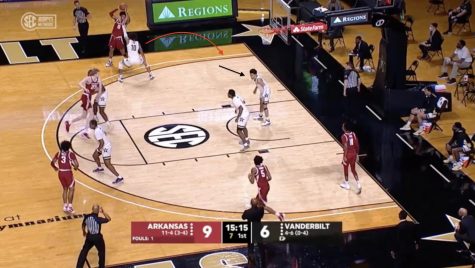
In the picture above, Stute is guarding Arkansas’ Justin Smith on the far wing. Stackhouse wants his freshman to force Smith to drive baseline where Pippen Jr. is waiting to help.
Instead, as seen, Stute opens his front foot and allows Smith to enter the paint. This forces a busted Vanderbilt rotation that yields a wide-open three for Arkansas’ Jalen Tate.
To fix this, Stute needs to “square” himself up to his opponent on the wing. This simply means he needs to slide his entire body further towards halfcourt so his feet are directly aligned with Smith’s. That way, Smith only has two options: drive baseline or back out towards halfcourt.
Although Stute shouldered an unnecessary amount of blame from Stackhouse postgame, this has been a consistent issue all year from this entire team. Pippen Jr. and others have consistently fallen victim to allowing middle drives.
Fouls, fouls, fouls
Both of the preceding ailments disrupt Vanderbilt’s entire defense, often resulting in far too many fouls.
Since SEC play began on Dec. 30, the Commodores have committed 106 personal fouls that have yielded 96 opponent points at the free throw line. In contrast, Vanderbilt has drawn just 95 fouls that have gained just 71 points via free throws.
There are poor calls in every NCAA basketball game. But this 25-point free throw differential is far too large to be chalked up to poor officiating. Vanderbilt is undisciplined when it comes to fouling on defense, and many of these fouls are very preventable.
As seen above, the Commodores fouled multiple jump shooters in their loss to Mississippi State on Jan. 9. One of the first defensive principles taught to children playing basketball is don’t foul jump shooters. Yet soft fouls from Vanderbilt defenders allowed Mississippi State’s DJ Stewart to convert three-point plays on each of the above instances.
Vanderbilt surrendered 33 free throw attempts to Tennessee on Jan. 16, and the clip above shows why. Harvey attempting to block a clear transition dunk, Thomas (again) putting pressure on a bigger guard 40 feet from the basket and Pippen Jr. attempting a lazy back-tap have such low success rates that they are not even slightly worthwhile.
Even if these plays may not look like fouls, the Commodores continue to set officials up to make bad calls with their ill-advised decisions.
Some of Vanderbilt’s fouling issues stem from the aforementioned flawed scheme, but much of it is a simple lack of discipline and focus on the defensive end of the floor
**
The Commodores currently rank 200th in adjusted defensive efficiency at 103.3. This means they would be expected to allow 103.3 points per 100 possessions to an average Division-I team. That number is dead last among all Power Five teams.
“I just think it’s a focus thing,” Stackhouse said Saturday. “We’ve gotta find some guys that want to play basketball. Right now, we’ve got some guys that don’t want to play no damn basketball. We’ve gotta figure that out sooner rather than later.”


